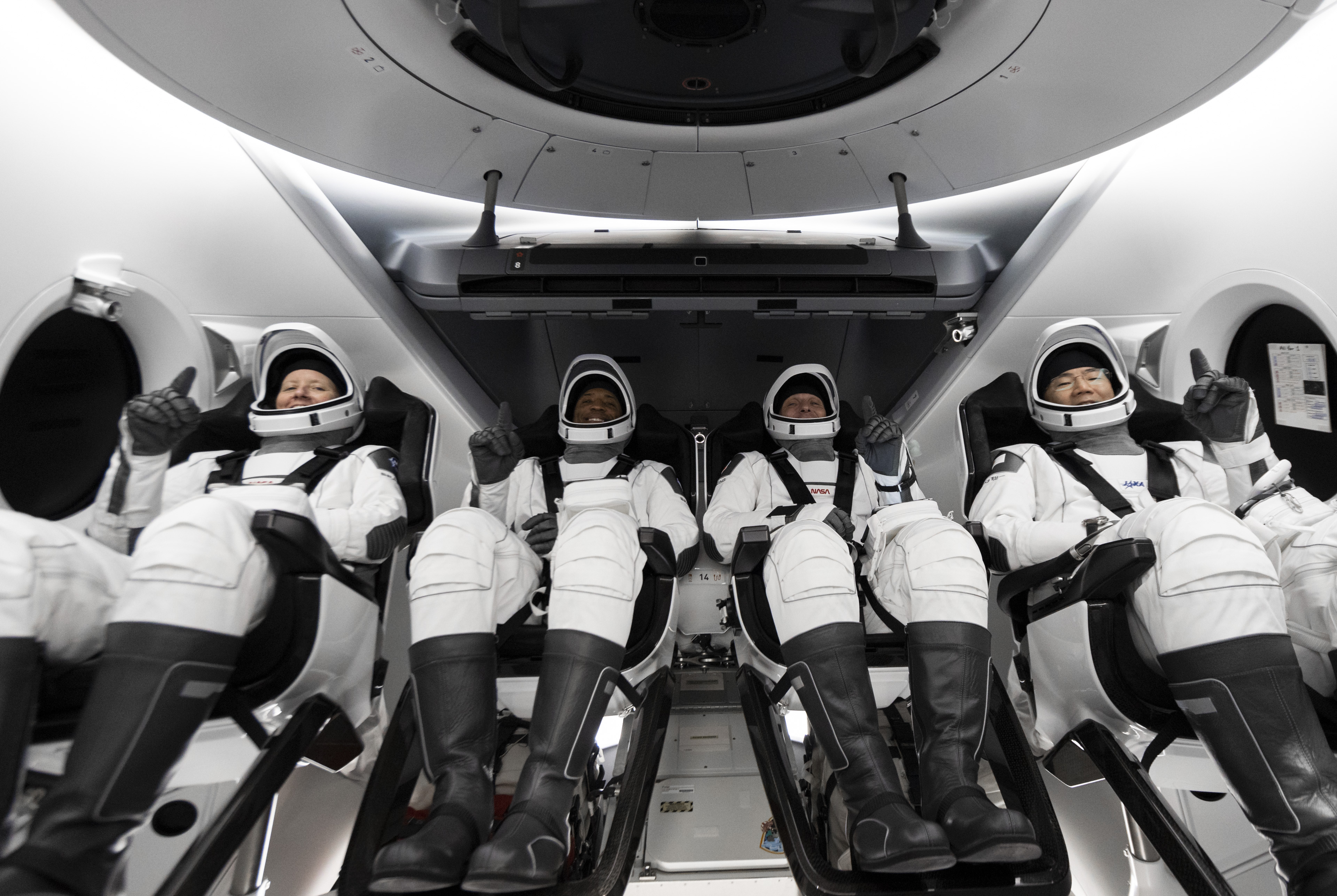A new era of spaceflight: SpaceX launches 4 astronauts into orbit
Four astronauts aboard SpaceX’s Crew Dragon spacecraft shot into orbit on Sunday (Monday, Manila time) for a 27-hour flight en route to the International Space Station (ISS). This is the second time that a rocket and a capsule commercially built by Elon Musk’s company have been used to send people into orbit, ending the country’s reliance on Russian Soyuz rockets.
The astronauts who are on their way to the ISS for a six-month science mission are Americans Michael Hopkins, Victor Glove and Shannon Walker as well as Japanese space agency astronaut Soichi Noguchi. They blasted off atop the Crew Dragon capsule dubbed Resilience from NASA’s Kennedy Space Center in Florida at 7:27 p.m. eastern time.
Resilience rises. ?
— NASA (@NASA) November 16, 2020
The Crew-1 mission has lifted off on a Falcon 9 rocket from @NASAKennedy at 7:27pm ET and is en route to the @Space_Station. #LaunchAmerica pic.twitter.com/5Q3uXSLvqt
“NASA is delivering on its commitment to the American people and our international partners to provide safe, reliable, and cost-effective missions to the International Space Station using American private industry,” NASA Administrator Jim Bridenstine said. “This is an important mission for NASA, SpaceX and our partners at JAXA, and we look forward to watching this crew arrive at station to carry on our partnership for all of humanity.”
Meanwhile, US President-elect Joe Biden congratulated NASA and SpaceX on the successful launch of the spacecraft, describing it as "a testament to the power of science and what we can accomplish by harnessing our innovation, ingenuity, and determination.”
Congratulations to NASA and SpaceX on today's launch. It’s a testament to the power of science and what we can accomplish by harnessing our innovation, ingenuity, and determination. I join all Americans and the people of Japan in wishing the astronauts Godspeed on their journey.
— Joe Biden (@JoeBiden) November 16, 2020
NASA said that Resilience will dock autonomously to the forward port of the station’s Harmony module about 11 p.m. Monday, Nov. 16. Those who would like to watch the live coverage of docking, hatch opening, and the ceremony at the ISS can visit NASA’s website here.
According to NASA, the crew will conduct “science and maintenance” during their six-month stay at the ISS and will return to the surface of the earth in spring 2021. Their stay at the orbiting laboratory will be the longest space mission launched from the United States, according to NASA.
Apart from that, the Crew Dragon is also transporting over 500 pounds of cargo, new science hardware and experiments inside, including Food Physiology, a study of the effects of an optimized diet on crew health and, Genes in Space-7, a student-designed experiment that aims to better understand how spaceflight affects brain function, enabling scientists to keep astronauts healthy as they prepare for long-duration missions in low-Earth orbit and beyond.

American astronauts Michael Hopkins, Victor Glove and Shannon Walker and Japanese space agency astronaut Soichi Noguchi onboard the Resilience
The space agency also said that the astronauts are also expected to witness a series of uncrewed spacecraft including the next generation of SpaceX cargo Dragon spacecraft, the Northrop Grumman Cygnus, and the Boeing CST-100 Starliner on its uncrewed flight test to the station. Additionally, they will also conduct "a variety of spacewalks and welcome crews of the Russian Soyuz vehicle and the next SpaceX Crew Dragon in 2021."
Liftoff! pic.twitter.com/Unf1ScdVFB
— SpaceX (@SpaceX) November 16, 2020
The space agency added that some of the science and research investigation that the crew will undertake include a study using chips with tissue that mimics the structure and function of human organs to understand the role of microgravity on human health and diseases and translate those findings to improve human health on Earth, growing radishes in different types of light and soils as part of ongoing efforts to produce food in space, and testing a new system to remove heat from NASA’s next generation spacesuit, the Exploration Extravehicular Mobility Unit (xEMU).
The astronauts named the Crew Dragon spacecraft Resilience in honor of their families, colleagues, and fellow citizens and to highlight the dedication of the teams involved with the mission have displayed.
(Photos from AFP, NASA, SpaceX)
